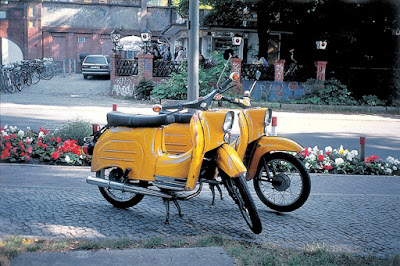Widely regarded as one of the most influential Mexican contemporary
artists of his generation. Gabriel Orozco is a painter, sculptor and
photographer highly known for re-framing urban landscapes and the everyday
object, blurring the boundaries of what can be considered art like Marcel
Duchamp and his usage of readymade objects. He commented on that art doesn’t become
art for just being shown in an exhibit, rather “what is most important is not
so much what people see in the gallery or museum, but what people see after looking
at these things, how they confront reality again”. Overall, Orozco does not
view photography with the intention of taking beautiful pictures of what he
sees in his surroundings, alternately, photography is more like an instrument in
displaying humble moments to impact the viewers in much more profound manner of
their own environment and how they affect it, and that is what I truly enjoy
from his oeuvre. A lot of his work is achieved through a combination of mediums,
exploration, and most of the time just leaving it to fate to come across those
special encounters by chance.
When
it comes through exploration and the importance of geography, Orozco’s forty
image series Until You Find Another
Yellow Schwalbe (Hasta que Encuentres Otra Schwalbe Amarilla, 1995) illustrates him driving through
the streets of Berlin over a period of three months to find the same yellow motorcycle
as his. To show and reproduce the motorcycle’s movements through the city and
then capture it together with it’s newly found partner. In 1996 the art
historian Benjamin Buchloh noted that the Yellow Schwalbe Orozco chose had been
produced in the dissolved German Democratic Republic suggesting that this work
is therefore “a reflection on the wasted opportunities of a socialist counter model
... that had been once at hand” and by him finding other Schwalbes it was as if
a representation of Germany’s reunification.
This body of work alongside the Atomists:
Ascension shows the photographer’s interest in series, repetition, mapping
and patterns. This series was created for one of Orozco's most
famous projects, entitled Empty Club in the unused interior of a former gentleman's club in London, it
is one of many of Orozco’s works which are often created for the specific
exhibit. Orozco features images taken from British newspapers which show
athletes in action. Even though at first they may appear as appropriated images
with circles dissecting the player, the meaning behind is much more. Like the
title of the series Anatomists, these
shapes relate to the ancient Greek theory of atomism, which proposes that all
matter is formed from tiny particles. Orozco has made these minute particles
visible to the human eye to illustrate the unification of everything surrounding
humanity.
 |
| Until You Find Another Yellow Schwalbe (Hasta que Encuentres Otra Schwalbe Amarilla), 1995 C-type print |
 |
| Atomists: Ascension 1996 computer-generated laser print mounted on aluminium |
No comments:
Post a Comment